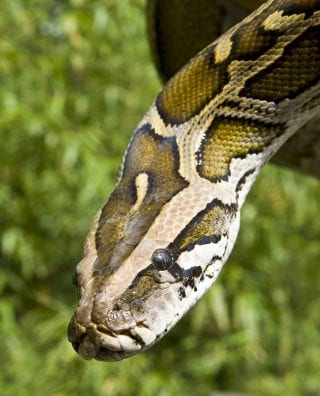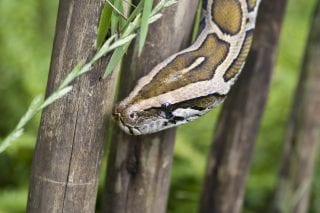Fun facts
Royal name
Ball pythons got their name because African rulers used to wear living pythons as jewellery.
Playing ball
Ball pythons get their names because they curl themselves into a ball when they feel threatened. This keeps the head protected in the centre of the coil.
Head pits
Ball pythons have a series of ‘heat pits’ on each side of their mouth. This allows them to locate their prey by sensing the heat the prey gives out.


